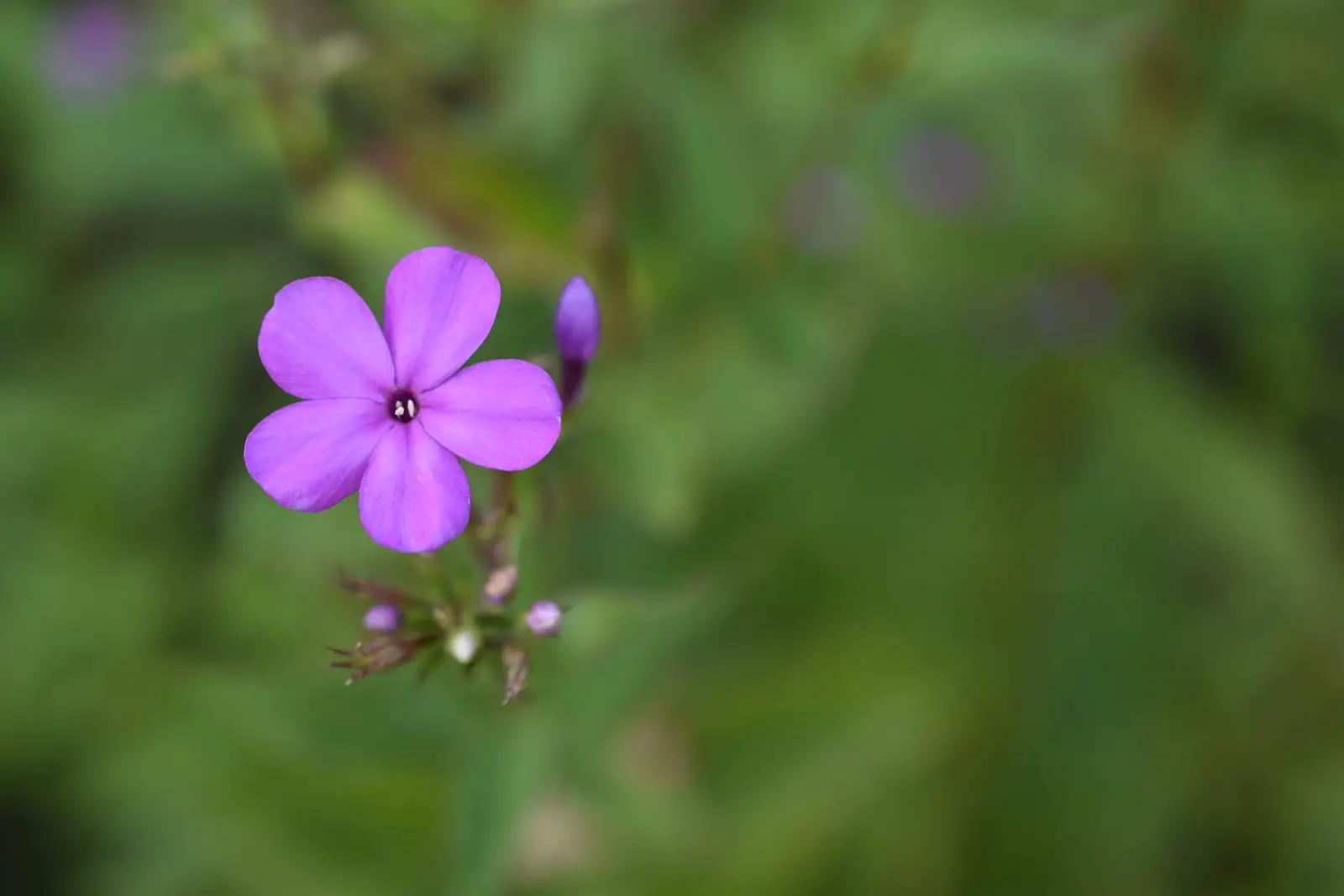Phlox is a genus of flowering plants that adds a splash of color to any garden or landscape. With over 65 species and numerous cultivars, the Phlox family is versatile, offering a wide range of colors, shapes, and sizes.
Most commonly found in North America, Phlox can bloom in beautiful shades of white, purple, red, blue, and pink. The distinct, sweet fragrance of the Phlox flowers attracts butterflies, making it an excellent addition for butterfly gardens.
Phlox can be categorized into two main types: Creeping Phlox (Phlox subulata) and Garden Phlox (Phlox paniculata). Creeping Phlox is a low-growing variety perfect for ground cover, while Garden Phlox tends to grow upright, making it ideal for borders or as focal points in the garden. Both types share the vibrant and fragrant blossoms that make Phlox a favorite among gardeners.
| Aspect | Details |
|---|---|
| Common Names | Phlox, Garden Phlox, Creeping Phlox, Moss Phlox |
| Botanical Name | Phlox |
| Family | Polemoniaceae |
| Plant Type | Perennial or Annual |
| Mature Size | 4-6 inches (Creeping) to 2-4 feet (Garden) |
| Sun Exposure | Full Sun to Partial Shade |
| Soil Type | Well-Drained, Loamy Soil |
| Hardiness Zones | 3-9 |
| Native Area | North America |
Phlox Care
Phlox is a relatively easy plant to care for, but it requires attention to sunlight, watering, and soil conditions. Proper care ensures that the plant produces vibrant, healthy blooms throughout the growing season.
Planting Phlox in a suitable location with adequate sunlight and well-draining soil sets the stage for successful growth. Regular watering, balanced fertilization, and occasional pruning will keep the Phlox thriving. Depending on the specific variety, different care techniques may be needed, but the fundamental principles remain the same.
Light Requirement for Phlox
Phlox does best in full sun to partial shade. While it can tolerate some shade, too much can lead to leggy growth and fewer blooms. Ensuring at least 6 hours of sunlight a day promotes healthy flowering.
Soil Requirements for Phlox
Well-drained, loamy soil with a neutral to slightly alkaline pH is ideal for Phlox. Compacted or clayey soil can hinder growth, so adding compost or other organic matter can improve drainage and fertility.
Water Requirements for Phlox
Phlox needs regular watering, especially during dry periods. However, overwatering can lead to root rot, so the soil should be kept moist but not soggy. Drip irrigation or watering at the base helps prevent leaf diseases.
Temperature and Humidity
Phlox is adaptable to different temperature conditions but thrives in temperatures ranging from 65-75°F (18-24°C). Adequate airflow and avoiding wet foliage can control humidity-related problems.
Fertilizer
An application of balanced, slow-release fertilizer in the spring can boost growth. Compost or well-rotted manure can also provide necessary nutrients.
Pruning Phlox
Pruning or deadheading spent blooms encourages continued flowering. Cutting back the foliage in the fall can prevent disease in the next growing season.
Propagating Phlox
Phlox can be propagated by division, stem cuttings, or seed. Dividing mature plants in the spring or fall ensures healthy growth.
How To Grow Phlox From Seed
Seeds can be sown indoors 8-10 weeks before the last frost or directly outdoors after the danger of frost has passed. Germination usually takes 10-21 days.
Common Pests & Plant Diseases
Powdery Mildew
A common problem, treat with fungicides or neem oil.
Spider Mites
Control with insecticidal soap or predatory insects.
Common Problems With Phlox
Leggy Growth
Caused by insufficient light, moving the plant to a sunnier location can correct this.
Yellowing Leaves
Often a sign of overwatering or poor drainage. Adjust watering habits and improve soil conditions.
Pro Tips
- Provide proper spacing to ensure good air circulation, reducing disease risk.
- Mulch around the base to retain moisture and control weeds.
- Select disease-resistant varieties if powdery mildew is a common issue in your area.
- Plant in groups or clusters for a more substantial visual impact.
- Deadhead regularly to encourage continuous blooming.




